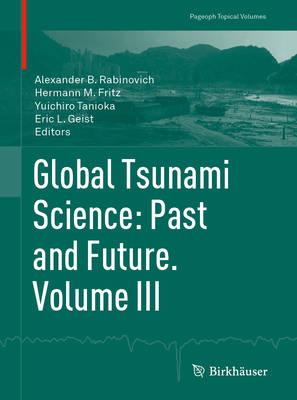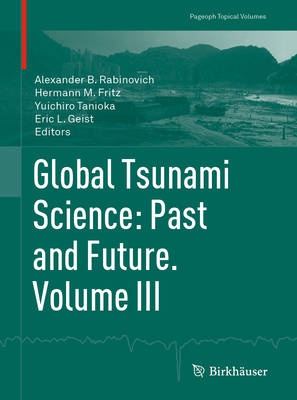
- Retrait gratuit dans votre magasin Club
- 7.000.000 titres dans notre catalogue
- Payer en toute sécurité
- Toujours un magasin près de chez vous
- Retrait gratuit dans votre magasin Club
- 7.000.0000 titres dans notre catalogue
- Payer en toute sécurité
- Toujours un magasin près de chez vous
Global Tsunami Science: Past and Future. Volume III
52,95 €
+ 105 points
Description
Tsunami science has evolved significantly since the occurrence of two of the most destructive natural disasters in recent times: the 26 December 2004 Sumatra tsunami that killed about 230,000 people along the coasts of 14 countries in the Indian Ocean and the 11 March 2011 Tohoku (Great East Japan) tsunami that killed almost 20,000 people and destroyed the Fukushima Daiichi nuclear power plant. As a result of these and many other destructive tsunamis that have occurred over just the last decade, scientists from around the world have come together to engage in tsunami research. The global community of researchers has also expanded by discipline, adapting advances in other sciences to study all aspects of tsunami hydrodynamics, detection, generation, and probability of occurrence. The papers presented in this third of three topical volumes of Pure and Applied Geophysics reflect the state of tsunami science during this time. Five papers from diverse geographic regions, ranging from off South Africa to northern Kamchatka, demonstrate the global nature of tsunami hazards. Six papers on tsunami hydrodynamic analysis and modeling form the core of this volume, similar to the previous two volumes of Global Tsunami Science. As a forefront of tsunami research, five papers discuss prehistoric tsunamis and tsunami generation by phenomena other than earthquakes. Finally, tsunami warning and real-time forecasting are important outcomes of tsunami science and are represented in this volume by four papers. Collectively, this volume highlights contemporary trends in global tsunami science, both fundamental and applied toward hazard assessment and mitigation. The volume is of interest to scientists and practitioners involved in all aspects of tsunamis from source processes to coastal impacts. Postgraduate students in geophysics, oceanography and coastal engineering - as well as students in the broader geosciences, civil and environmental engineering - will also find the book to be a valuable resource, as it combines recent case studies with advances in tsunami science and natural hazards mitigation.
Spécifications
Parties prenantes
- Editeur:
Contenu
- Nombre de pages :
- 363
- Langue:
- Anglais
- Collection :
Caractéristiques
- EAN:
- 9783030037598
- Date de parution :
- 23-01-19
- Format:
- Livre broché
- Format numérique:
- Trade paperback (VS)
- Dimensions :
- 221 mm x 257 mm
- Poids :
- 725 g

Les avis
Nous publions uniquement les avis qui respectent les conditions requises. Consultez nos conditions pour les avis.





